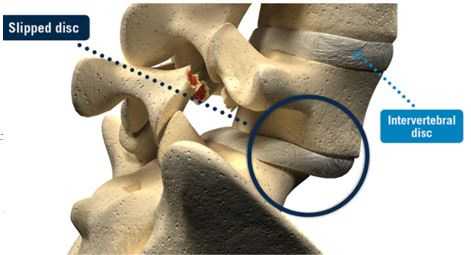We Are Slipped Disc Experts
state of the art ultrasonic Slipped Disc Treatment
What is Slipped Disc ?
“Slipped disc” is a nonmedical and potentially misleading term used to describe a common degenerative spine condition. The term is deceptive because disc slippage is usually not involved; instead, in some cases, the firm outer shell of a spinal disc is forced outside of its normal boundary. In other cases, a disc will be said to “slip” if it develops a tear in its thick, multilayered wall. This tear can begin from the inside of the disc and work its way outward, or a disc can break open on the outside due to an injury or weak spot.
If a disc tear happens, some of the disc’s gel-like inner core material (nucleus pulposus) can potentially escape the confines of the disc wall and seep into the spinal canal. Also known as a herniated, ruptured or bulging disc, slipped discs can occur in the cervical (upper), thoracic (middle) and lumbar (lower) regions of the spine.

What Are The Causes Of Slipped Disc?
A slipped disc does not always cause symptoms. In general, discomfort arises only if displaced soft tissue irritates the damaged disc wall or compresses a sensitive spinal nerve root or the spinal cord itself. The nature and location of the symptoms will depend on the site of the damaged disc. For instance, a slipped disc in the lumbar spine can cause pain, tingling, numbness, muscle weakness and spasms that radiate from the lower back through the buttocks, hips, legs and feet. In other cases, a damaged disc in the cervical spine can lead to slipped disc symptoms in the neck, shoulders, arms and hands. Slipped discs and other degenerative spinal conditions often affect the lumbar region of the spine, which supports much of the body’s weight and therefore is especially prone to damage from the effects of ongoing wear and tear.
Am I the right patient for Slipped Disc Treatment?
If you have slipped disc, call us about the SonoSpine Procedure.